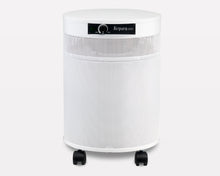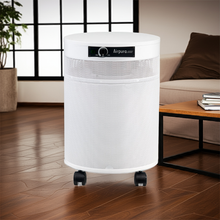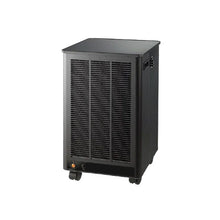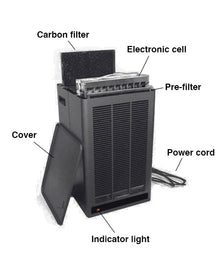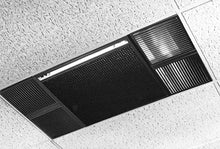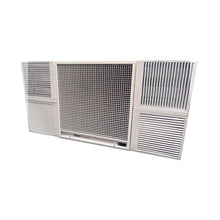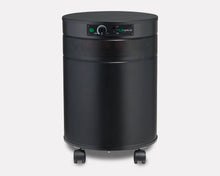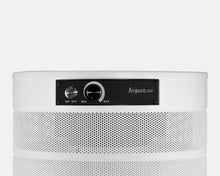Maintaining Your Commercial Smoke Eater: Filter Replacement & Cleaning for Peak Performance
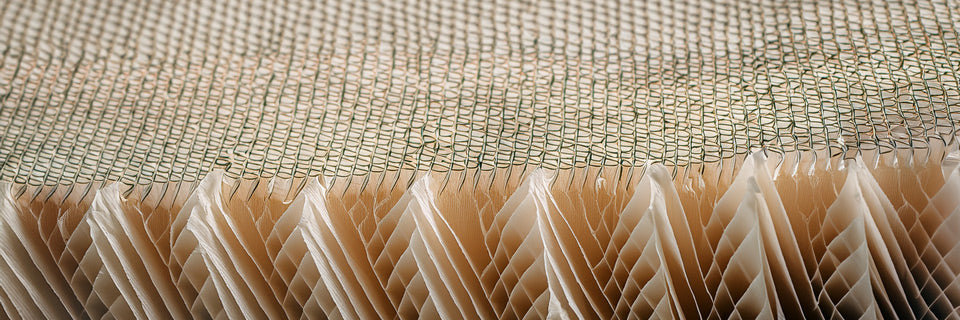
For businesses that manage environments with active smoking or vaping – from bustling bars and restaurants to specialized cigar lounges and vape shops – a commercial smoke eater isn't just an amenity; it's a critical operational asset. These powerful air purification systems are the front line in removing airborne smoke, vape aerosols, and their associated odors, ensuring a comfortable, healthy, and compliant environment for both patrons and staff. However, even the most robust "cigarette smoke eliminator commercial" units are only as effective as their maintenance.
At Commercial Air Purifiers, LLC, we consistently emphasize that optimal air quality is an ongoing commitment, not a one-time installation. The performance of your "smoke eater filter change" schedule and "clean commercial air purifier smoke" practices directly dictates its ability to keep your air pristine. Neglecting maintenance not only compromises air quality but can also lead to increased energy consumption, premature equipment wear, and costly repairs. This comprehensive guide will walk you through the essential steps for maintaining your commercial smoke eater, providing practical advice for filter replacement, cleaning protocols, and effective "troubleshooting smoke purifier" issues to ensure peak performance and a consistently clear atmosphere.
The Cost of Neglect: Why Smoke Eater Maintenance is Non-Negotiable
Imagine a sophisticated engine designed to purify the air. Now imagine that engine trying to run efficiently with clogged filters, caked-on residue, and struggling components. That's what happens when a commercial smoke eater is poorly maintained in a high-demand environment. The consequences are immediate and detrimental:
-
Declining Air Quality: The most obvious impact. As filters become saturated with tar, nicotine, and particulate matter, their ability to capture contaminants drastically diminishes. This leads to lingering smoke smells, visible haze, and continued exposure to harmful airborne pollutants. Your investment in air quality becomes virtually pointless.
-
Increased Energy Consumption: Clogged filters create significant resistance to airflow. Your smoke eater's motor (and potentially your HVAC fan if it's an integrated system) has to work much harder to pull air through, leading to higher electricity bills.
-
Reduced Equipment Lifespan: Continuous strain on the motor and other components due to restrictive, dirty filters accelerates wear and tear, increasing the likelihood of breakdowns and shortening the overall life of your expensive air purification system.
-
Unpleasant Odors Persist: Activated carbon filters, crucial for odor removal, become saturated over time. Instead of adsorbing odors, they can actually start to re-emit them, contributing to the very problem they're supposed to solve.
-
Compliance Risks: In environments where air quality regulations are in place, a poorly performing smoke eater could lead to violations and fines.
-
Negative Business Impact: Customers seeking a clean environment will be deterred by persistent smoke or vape odors, leading to reduced patronage and a tarnished reputation.
Our experience at Commercial Air Purifiers, LLC, through countless service calls for "troubleshooting smoke purifier" issues, reveals that the vast majority of performance complaints stem directly from neglected maintenance. A proactive approach is always more cost-effective than reactive repairs.
The Core of Maintenance: Smoke Eater Filter Change & Cleaning Protocols
A commercial smoke eater typically employs a multi-stage filtration system, each component requiring specific attention. Understanding your specific unit's filter configuration is paramount. While models vary, most include:
-
Pre-filters (Tar Barriers / Mesh Filters): These are the first line of defense, capturing large particulates, lint, and crucially, sticky tar and heavy smoke residue.
-
Electrostatic Precipitator Cells (for some models): If your unit uses electrostatic precipitation, these cells collect charged particles.
-
True HEPA Filters: These capture microscopic airborne particles (0.3 microns and larger) with 99.97% efficiency.
-
Activated Carbon Filters: These adsorb gaseous pollutants, VOCs, and odors.
-
Post-filters (Optional): Sometimes included for final particulate capture or to protect the fan motor.
Filter Replacement Schedule: The "Smoke Eater Filter Change" Imperative
The frequency of filter replacement is the single most critical factor in maintaining performance. It's highly dependent on usage and smoke density.
-
Pre-filters (Tar Barriers / Mesh Filters):
-
Frequency: This is your most frequently changed/cleaned filter. In heavy-use environments (e.g., busy cigar lounges), they may need to be replaced or washed weekly or bi-weekly. In moderate-use settings, perhaps monthly.
-
Why so often? They bear the brunt of the heaviest particulate load, including sticky tar. Letting them get overly clogged quickly impacts airflow and degrades the performance of subsequent filters.
-
Cleaning vs. Replacing: Some pre-filters are washable (e.g., aluminum mesh), while others are disposable (e.g., pleated paper). If washable, use a strong degreaser and hot water, allowing them to dry completely before re-installation. For disposable types, always have spares on hand.
-
-
True HEPA Filters:
-
Frequency: Generally last 1-3 years in a commercial smoke environment. However, heavy smoke can reduce this lifespan. Your unit may have a filter life indicator.
-
Why? They are designed for high efficiency and have a large surface area. Their effectiveness decreases slowly as they load with particles.
-
Replacement: HEPA filters are typically not washable and must be replaced. Handle with care, as they contain captured pollutants.
-
-
Activated Carbon Filters:
-
Frequency: This is often the most variable filter in terms of lifespan, ranging from 3-12 months depending on the volume of gaseous pollutants. In a high-smoke environment, expecting closer to 3-6 months is realistic.
-
Why? Carbon works by adsorption. Once its pores are saturated, it can no longer capture gases and may even start releasing previously adsorbed odors.
-
Replacement: Activated carbon is not washable and must be replaced. These filters are often heavy due to the carbon mass.
-
-
Electrostatic Precipitator Cells (if applicable):
-
Frequency: These are typically washable and should be cleaned monthly or bi-monthly in heavy-use environments.
-
Cleaning: Carefully remove and wash with a strong degreaser (often a dedicated cleaner provided by the manufacturer) and hot water. Rinse thoroughly and allow to dry completely to avoid electrical arcing.
-
Signs it's Time for a Filter Change/Clean:
-
Reduced Airflow: The fan sounds like it's working hard but less air is coming out.
-
Lingering Smoke/Odor: The primary reason you bought the unit isn't being addressed effectively.
-
Visible Dirt/Discoloration: Especially on pre-filters, but sometimes even on HEPA filters.
-
Increased Noise: A struggling motor due to clogged filters.
-
Filter Indicator Light: Many modern commercial units have built-in filter life indicators.
Expert Tip from Commercial Air Purifiers, LLC: Always stock a supply of replacement filters, especially pre-filters and carbon filters. Waiting until performance drops significantly means your air quality has already suffered. Proactive replacement saves headaches and ensures continuous clean air. We work with businesses to establish custom filter supply programs based on their usage patterns.
"Clean Commercial Air Purifier Smoke" Protocols: Beyond Filters
Beyond filter maintenance, regular cleaning of the unit itself is crucial.
-
Exterior Cleaning: Wipe down the exterior casing regularly to remove dust, tar, and grime buildup. Use mild, non-abrasive cleaners.
-
Internal Components (Motor/Fan Blade Access): Periodically, the interior of the unit, including the fan blades and motor housing, may accumulate tar and dust. Always disconnect power before attempting this! This is often best left to a professional HVAC technician or the manufacturer's authorized service provider, as it requires opening the unit and potentially dealing with electrical components. Sticky residue on fan blades can create imbalance and reduce efficiency.
-
Ductwork (for integrated systems): If your smoke eater is integrated with your HVAC system, professional duct cleaning may be necessary every few years to remove accumulated smoke residue within the ductwork itself.
"Troubleshooting Smoke Purifier" Common Issues
Even with diligent maintenance, issues can arise. Here are common problems and initial troubleshooting steps:
-
Issue: Unit is Running, but Smoke/Odor Persists.
-
Check: Most likely clogged filters. Start with the pre-filter, then activated carbon, then HEPA.
-
Action: Replace/clean filters according to schedule. Ensure filters are installed correctly. Verify the unit is properly sized for the space and usage (refer to CFM calculations).
-
Troubleshooting Commercial Air Purifiers, LLC: We often find clients underestimate the lifespan of activated carbon in heavy smoke environments. A common call is, "It's still smelling after 6 months," and sure enough, the carbon is saturated.
-
-
Issue: Reduced Airflow / Unit Sounds Strained.
-
Check: Overly clogged filters (especially pre-filters or electrostatic cells). Obstructions in intake/outtake vents.
-
Action: Replace/clean all filters. Ensure nothing is blocking the unit's airflow path. Check for any debris caught in the fan blades (POWER OFF FIRST!).
-
-
Issue: Unit is Not Turning On.
-
Check: Power supply. Is it plugged in? Is the circuit breaker tripped?
-
Action: Test the outlet. Reset the breaker. Check the unit's power switch. If it has a safety interlock (common on commercial units), ensure all panels are securely closed. If still not working, it may indicate an internal electrical fault requiring professional service.
-
-
Issue: Unit is Making Unusual Noises (Grinding, Rattling).
-
Check: Fan blade obstruction (POWER OFF FIRST!). Loose components inside the unit. Motor bearings.
-
Action: Power off and inspect fan area. Gently check if blades spin freely (no debris). If noises persist, it often indicates a mechanical issue with the motor or fan assembly, requiring professional diagnosis and repair.
-
-
Issue: Unit Emits an Unpleasant Odor.
-
Check: Saturated activated carbon filter. Dirty electrostatic cells or internal components.
-
Action: Replace activated carbon filter. Thoroughly clean electrostatic cells (if applicable). Clean internal components (professional assistance often recommended).
-
When to Call a Professional:
While routine filter changes and exterior cleaning can be handled by in-house staff, complex issues or internal component cleaning/repair should always be performed by a qualified HVAC technician or a service professional from Commercial Air Purifiers, LLC. Attempting repairs without proper training can be dangerous and void warranties.
Conclusion: A Clear Path to Clean Air
Your commercial smoke eater is an investment in the health, comfort, and success of your business. Like any high-performance equipment, its effectiveness hinges on diligent and consistent maintenance. Understanding your "smoke eater filter change" schedule, implementing rigorous "clean commercial air purifier smoke" protocols, and knowing how to approach "troubleshooting smoke purifier" issues are essential for ensuring peak performance.
At Commercial Air Purifiers, LLC, we empower businesses with the knowledge and the highest quality air purification solutions to create truly fresh environments. Don't let neglect compromise your air quality. Embrace a proactive maintenance routine, and ensure your commercial smoke eater continues to deliver the clean, clear air your patrons and employees deserve. It's a small effort for a significant return on investment – in health, reputation, and peace of mind.
Frequently Asked Questions
Q1: How do I know what type of filters my commercial smoke eater needs?
A1: Always refer to your specific unit's owner's manual. It will detail the exact filter types, sizes, and part numbers required. If you've misplaced your manual, check the manufacturer's website or contact Commercial Air Purifiers, LLC, with your unit's make and model number for assistance. Using incorrect filters can damage your unit and compromise performance.
Q2: Can I wash the activated carbon filter to extend its life?
A2: No. Activated carbon filters work by adsorption, a chemical bonding process. Once the carbon is saturated with pollutants, washing it will not regenerate its adsorptive capacity. Washing can also damage the filter media or wash away specialized impregnations, rendering it ineffective. Activated carbon filters must always be replaced.
Q3: Is professional maintenance really necessary, or can I do everything myself?
A3: While routine filter changes and exterior cleaning can often be performed in-house, professional maintenance is highly recommended for periodic deep cleaning of internal components (like fan blades and motor housings) and for diagnosing and repairing complex mechanical or electrical issues. Professionals have the tools, expertise, and safety training to handle these tasks, ensuring your unit operates safely and efficiently and extends its lifespan.
Q4: How often should I visually inspect my smoke eater's filters?
A4: In heavy smoke environments, a visual inspection of your pre-filters should occur weekly. For other filters, regular checks (e.g., monthly) can help you anticipate replacement needs, even if your unit has a filter life indicator. Early detection of excessive buildup can prompt timely filter changes and prevent performance degradation.
About the Author: Commercial Air Purifiers, LLC is a leading provider of high-quality air purification solutions for commercial, industrial, and specialized residential environments. With years of experience and a deep understanding of airborne contaminants, we are dedicated to helping businesses and individuals achieve optimal indoor air quality. Our commitment to research-backed solutions and customer well-being drives our mission to bring the best air purifiers to the market.
Publication Date: July 23, 2025
References:
-
Airpura Industries. (n.d.). Air Purifier Filter Life & Replacement. Retrieved from https://www.airpura.com/pages/filter-life-replacement (Provides general guidelines for filter life).
-
Clean Air America. (n.d.). Electrostatic Precipitators for Smoke Collection. Retrieved from https://cleanair.com/products/electrostatic-precipitators/smoke/ (Details about ESP cleaning).
-
Air Purifier Essentials. (2023, June 16). How Often Should You Change Air Purifier Filter? Retrieved from https://airpurifieressentials.com/how-often-change-air-purifier-filter/ (General maintenance advice, can be extrapolated to commercial units).
-
ASHRAE. (2021). ASHRAE Standard 62.1: Ventilation for Acceptable Indoor Air Quality. (This is a professional standard that emphasizes maintenance for sustained indoor air quality, supporting the need for regular filter changes and cleaning).
-
Filterbuy. (n.d.). Filter Maintenance Tips. Retrieved from https://filterbuy.com/resources/maintenance/ (General filter maintenance tips applicable across various systems).

